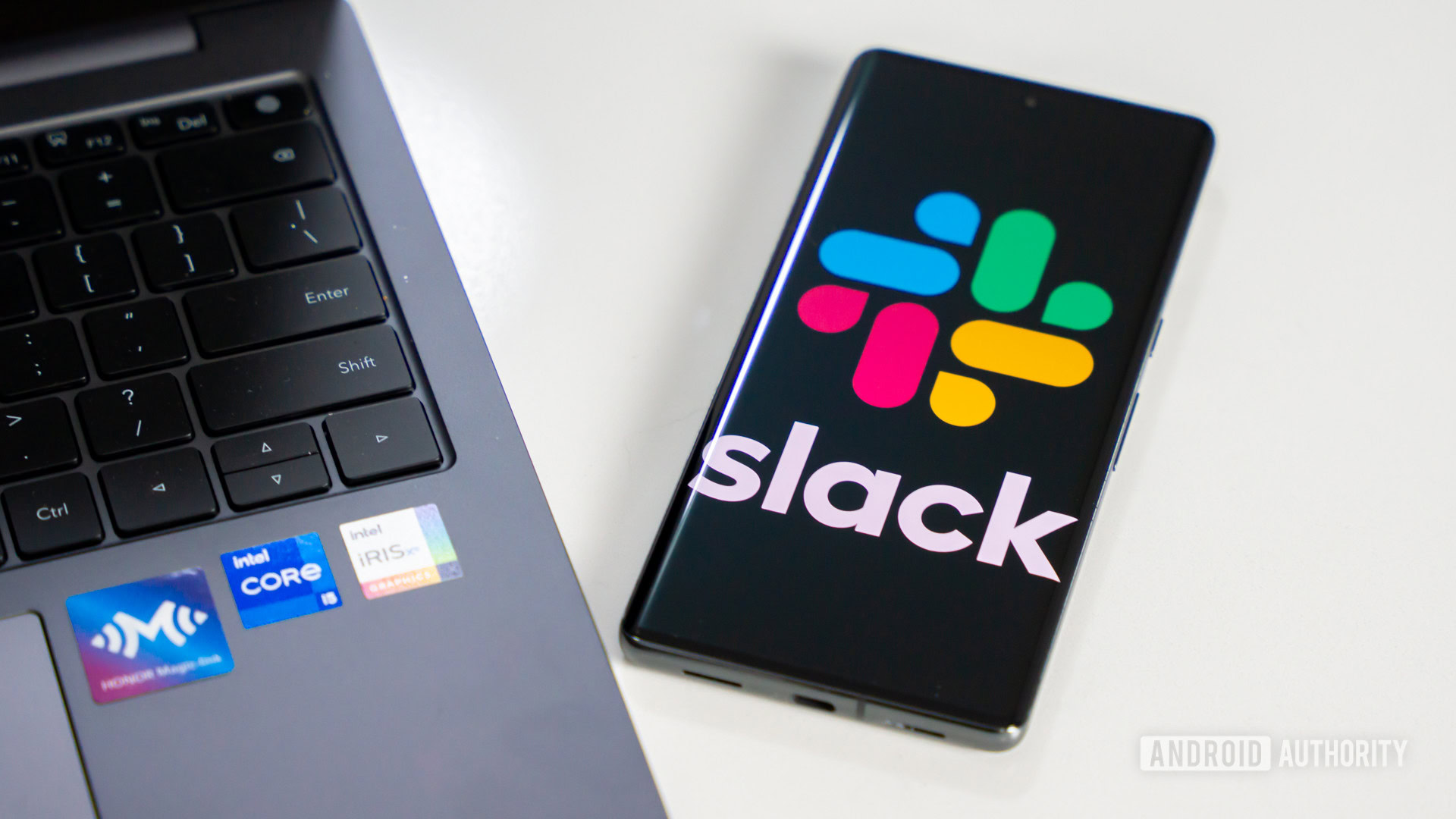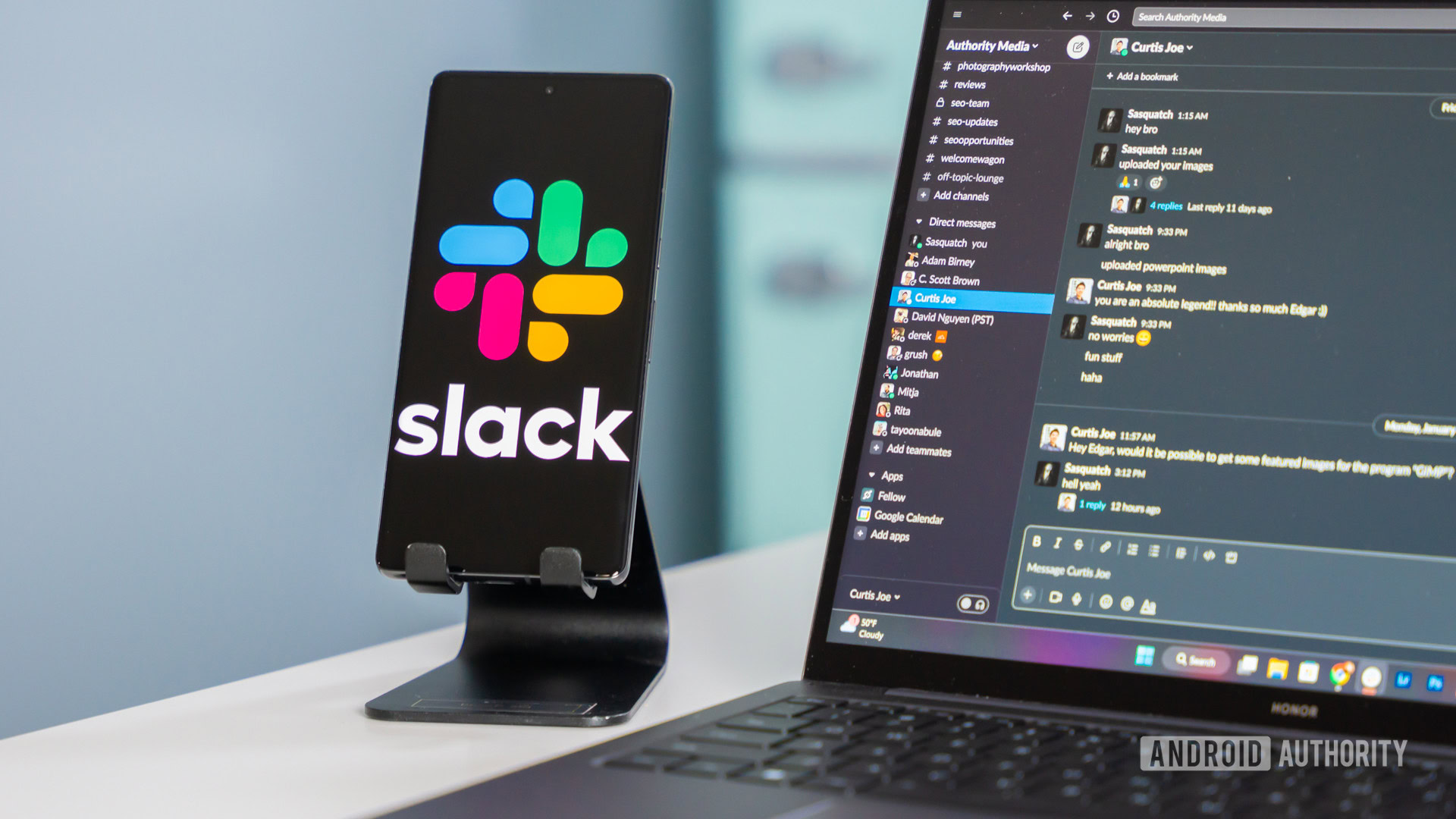Affiliate links on Android Authority may earn us a commission. Learn more.
How much does Slack cost? Plans, pricing, and alternatives

Slack has become an indispensable tool and messenger app for companies and teams looking to improve communication and collaboration. With its rich feature set, Slack helps streamline workflows, integrate with other software tools, and foster a more connected and efficient working environment. In this article, we’ll break down the different pricing plans and features available for Slack and how they compare to other popular communication tools in the market.
QUICK ANSWER
Slack offers a tiered pricing structure, with plans including Free, Pro ($7.25/user/month billed yearly, or $8.75/user/month billed monthly), Business Plus ($12.50/user/month billed annually, or $15/user/month billed monthly), and Enterprise Grid (custom pricing). Each plan comes with different features, integrations, and storage limits to cater to varying organizational needs.
KEY SECTIONS
How much does Slack cost?
Slack offers a range of pricing plans to suit the needs of different teams and organizations. Here’s a comparison of the plans along with their basic features:
| Plan | Price (billed yearly) | Price (billed monthly) | Notable features |
|---|---|---|---|
| Plan Free | Price (billed yearly) N/A | Price (billed monthly) N/A | Notable features -90-day message history -10 integrations with other apps. -Unlimited Audio and Video clips -One-on-one work with external partners -One-on-one Slack huddles |
| Plan Pro | Price (billed yearly) $7.25 per person/month | Price (billed monthly) $8.75 per person/month | Notable features -Unlimited message history -Unlimited apps and integrations -Unlimited lightweight, voice-first huddles -Secure work with other companies using Slack Connect channels |
| Plan Business Plus | Price (billed yearly) $12.50 per person/month | Price (billed monthly) $15 per person/month | Notable features -99.99% guaranteed uptime -User provisioning and deprovisioning -SAML-based single sign-on -Data exports for all messages |
| Plan Enterprise Grid | Price (billed yearly) Contact Sales for pricing | Price (billed monthly) Contact Sales for pricing | Notable features -Support for data loss prevention (DLP), e-Discovery and offline backup providers -HIPAA-compliant message and file collaboration |
Slack Free
The Free plan is ideal for small teams or those looking to try Slack without financial commitment. The plan gives you the basics of Slack, such as creating multiple channels in a shared workspace and sending audio and video files to others. However, your message and file history is limited to 90 days, meaning they will be automatically deleted after that time since posting. This can be a hindrance if you need to find context from past communications.
The free plan also gets you up to ten integration with other apps, such as Outlook Calendar, Google Dive, or Zoom. Your Slack huddles are limited to two people, meaning any impromptu live meetings can only be one-on-one. You get standard data encryption and two-factor authentication to keep your messages secure and access customer support during working hours if anything goes wrong.
Slack Pro
The Pro plan caters to small teams that require more advanced features for better collaboration. The plan includes all features of the Free plan, plus unlimited message history, unlimited apps and integrations, and no limits on the number of people attending a Slack huddle.
You can organize your channels into custom, collapsible sections on the sidebar, making it easier to keep track of the conversations happening. There’s also a workflow builder to automate routine processes and gain the ability for users to sign into Slack using their Google account, which is one less password to remember. Customer support runs 24/7, so you can reach out for help anytime.
Slack Business Plus
The Business Plus plan is designed for organizations looking to scale and increase productivity while maintaining a connected team environment. This plan includes all features of the Pro plan, along with SAML-based single sign-on (SSO) for added security and data export for all messages, so you always have a backup and extra administrative tools such as user management with SCIM provisioning.
Slack guarantees a 99.99% uptime and 24/7 support with a four-hour first response time for the Business Plus Plan.
Slack Enterprise Grid
The Enterprise Grid plan is tailored for larger organizations with stricter regulatory requirements and growth needs. This plan encompasses all the Business Plus plan’s features, including security and administrative features. If you share sensitive files, the key management tool lets users bring their own encryption keys and view detailed activity logs. There’s also more control over how mobile devices use or access company data and the ability to configure Slack to support HIPAA compliance.
On the administrative side, there’s support for data loss prevention (DLP), e-Discovery, and offline backup providers. There’s also added assistance with domain claiming, and org owners can create custom terms of service to meet unique standards.
Slack pricing vs the competition

Slack’s strength lies in its extensive app ecosystem and seamless integrations, allowing teams to bring their entire workflow into one platform. Despite the potentially higher price tag, Slack’s Pro or Business Plus plans may offer better value for organizations that rely heavily on third-party apps and integrations. But Slack isn’t the only option out there, and some of its biggest competitors include Microsoft Teams and Google Chat.
Slack is better for teams that use third-party applications. However, Microsoft Teams or Google Chat can be easier to integrate if you are already in those ecosystems.
Microsoft Teams is often considered a cost-effective alternative to Slack, especially for organizations with a Microsoft Office subscription since Teams is included. Teams offer robust collaboration features and integration with Word, Excel, and PowerPoint.
There is a free version, then the Microsoft Teams Essentials plan is $4/user/month, Microsoft Business Basic is $6/user/month, and Microsoft Business Standard is $12.50/user/month (all with annual subscriptions). These plans include unlimited chat, file sharing, tasks, polling, Microsoft Whiteboard, expanded cloud storage, and more. Teams may provide better value for the money for organizations invested in the Microsoft ecosystem.
On the other hand, Google Chat, formerly known as Google Hangouts, is another team collaboration tool that is part of Google Workspace. Similar to Microsoft Teams, Google Chat is included in Google Workspace subscriptions. Google Workspace offers four pricing plans: Business Starter ($6/user/month), Business Standard ($12/user/month), Business Plus ($18/user/month), and Enterprise (contact sales for pricing). Each plan includes various features like business email, video meetings, storage, security, and management controls. Google Chat integrates seamlessly with other Google Workspace apps like Docs, Sheets, and Slides, providing a cohesive experience for teams invested in the Google ecosystem.
Ultimately, the best value for your money will depend on your organization’s unique requirements, existing software subscriptions, and the specific features that are most important to your team. Slack may be better if your team relies on various third-party apps and integrations. However, if you already use Microsoft Office or Google Workspace, Microsoft Teams or Google Chat may offer better value due to their seamless integration with existing productivity tools and little to no additional cost.
FAQs
Slack’s pricing system includes four tiers: Free, Pro ($7.25/user/month billed yearly or $8.75/user/month billed monthly), Business Plus ($12.50/user/month billed annually or $15/user/month billed monthly), and Enterprise Grid (custom pricing).
Slack’s monthly cost varies by plan, starting from free to $8.75 (Pro) and $15 (Business Plus) per user, with custom pricing for Enterprise Grid.
Limits on Slack’s free plan include 10,000 searchable messages, ten app integrations, and single-team use.
Paying for Slack is worth it if you require more features, integrations, or storage beyond the free plan’s limitations.
The downside of Slack is its potential for information overload due to constant notifications and conversations, which can be distracting.
Cons of Slack include potentially higher costs compared to competitors, limited native collaboration tools, compatibility with existing ecosystems, and less advanced video conferencing features.